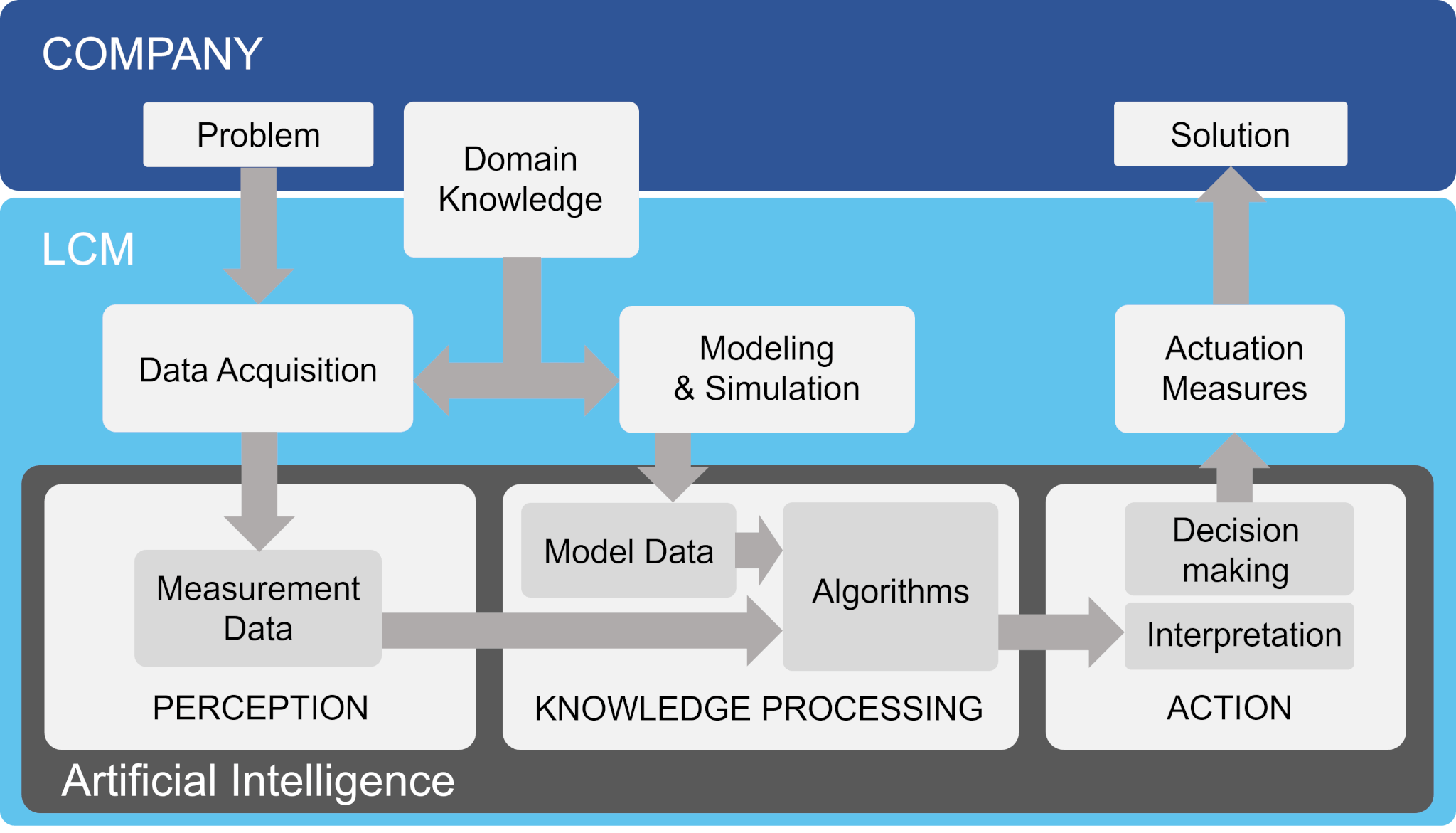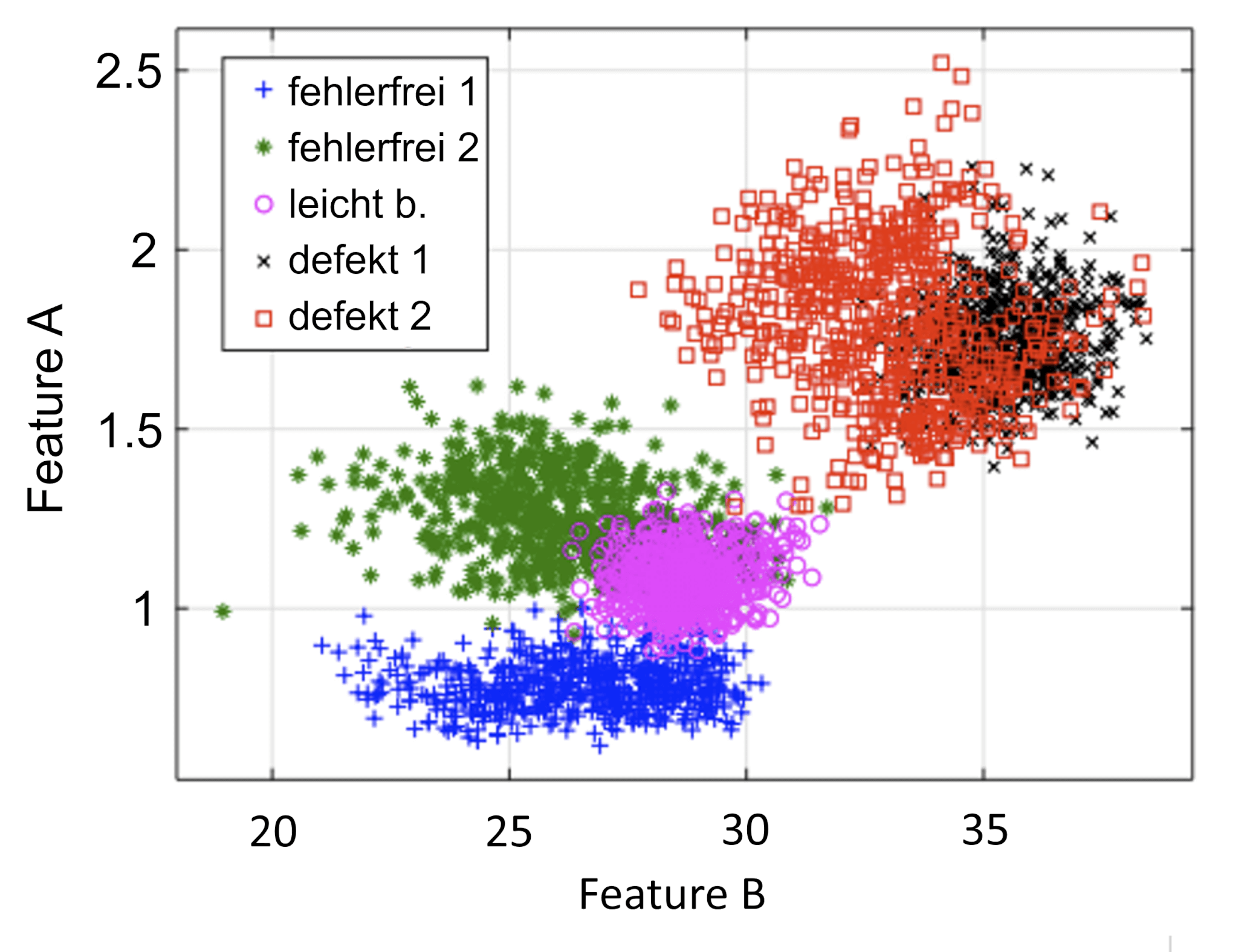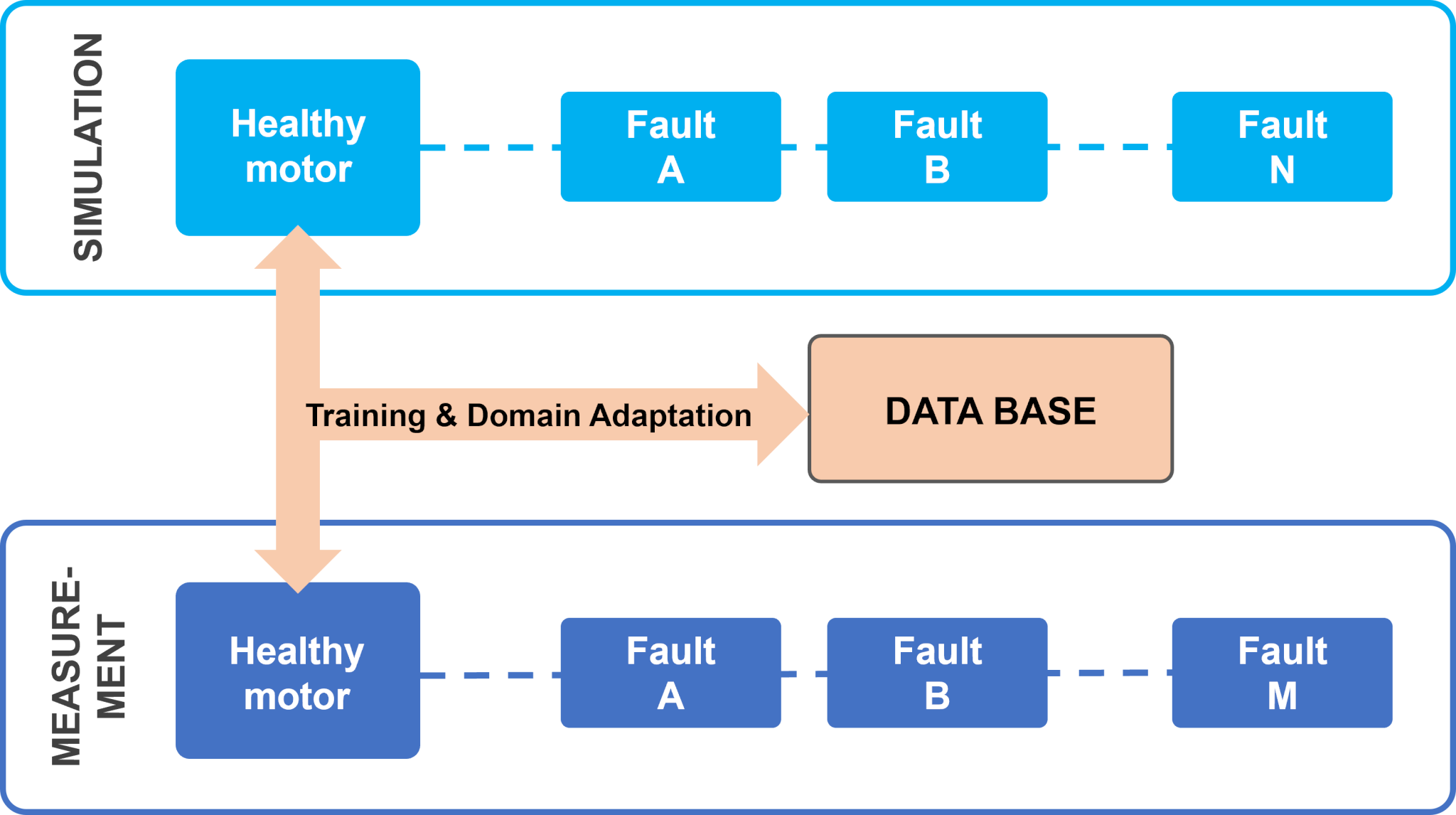Innovative AI solutions
Artificial Intelligence (AI) is a hot topic in today’s world. At LCM, we are your trusted partner in mechatronics research and development, providing our customers with the capability to seamlessly incorporate AI into their products. This integration not only enhances efficiency, accuracy, and reliability but also grants you a significant competitive edge. AI unlocks possibilities that were once unimaginable.
Discover how AI can revolutionize your industrial business, and let LCM guide you in harnessing the full potential of this transformative technology!
Industrial Use of AI
AI is a topic of conversation everywhere you turn. But what’s the real story behind it in terms of industrial use?
LCM AI-Solutions
LCM employs AI across diverse applications. Explore our solutions for inspiration!
AI Boarding
How can I initiate the integration of AI in my company, and what are the best tools for this purpose?
Definition of AI
“Artificial Intelligence is the ability of a machine to display human-like capabilities such as reasoning, learning, planning and creativity. AI enables technical systems to perceive their environment, deal with what they perceive, solve problems and act to achieve a specific goal. The computer receives data – already prepared or gathered through its own sensors such as a camera – processes it and responds. AI systems are capable of adapting their behaviour to a certain degree by analysing the effects of previous actions and working autonomously.”
(Source: EP).
Implementing AI in Industrial Settings
Implementing AI Solutions with LCM
LCM assists you in deploying AI for your specific applications, for instance in condition monitoring. Both LCM and your company usually possess deep understanding of the system named “domain knowledge”.
We start with employing customized sensor technology to collect precise system data. Simultaneously, we can create a computer model for system simulation that generates extra data, including possible undesirable states. The domain knowledge is integral to both data collection and model simulation.
Next, the gathered data is analyzed using AI algorithms to assess the current state of components or machinery. Based on this analysis, we activate suitable actuators or actions to maintain optimal system performance.
Leverage the benefits of LCM’s AI solutions to enhance your company’s performance!

Important Terms
Machine Learning
Machine learning enables understanding a system through data analysis. With adequate data from various operating states at hand, it’s possible to distinguish between these states, aiding in early fault detection. Key algorithmic methods include supervised learning, unsupervised learning, and reinforcement learning.
Digital Twin
At LCM, the digital twin encompasses more than just the CAD model; it incorporates the physical behavior and the simulation of the entire model. This extensive simulation enables the generation of data also of operating states of which typically only limited measurement data is available, such as undesirable or infrequently occurring conditions. Consequently, the digital twin plays a crucial role in averting operational downtimes.
Domain Knowledge
Data can be sourced from measurement devices or created through system modeling and simulation, incorporating existing knowledge about the system. This approach not only generates a broader range of data but also enables the simulation of operating states that are rare or undesirable in normal operations.
LCM AI-Solutions
This section showcases specific AI solutions successfully implemented by LCM.
Fault detection on ball bearings
Quality assurance using vibration measurement
In a gearbox-mounted ball bearing, faults are identified and categorized, ranging from “faultless” to “slightly damaged,” and up to “defective.” Using four key features, LCM’s solution achieves an impressive fault detection accuracy of 99%!

Pichler, K. et al, “Data-driven vibration-based bearing fault diagnosis using non-steady-state data”, Journal of Sensors and Sensor Systems, No. 9, 2020.
Generating Data via Fault Simulation
Obtaining fault data without operational downtime
Essential for identifying faults in components, machines, or systems, specific fault data can be effectively generated through the simulation of various fault scenarios. This approach is crucial in preventing undesirable operating conditions. Faults that are infrequent or never occur make AI training challenging, thus, simulation data proves to be exceedingly valuable.

Edwin Lughofer, Patrick Zorn and Edmund Marth, “Transfer learning of fuzzy classifiers for optimized joint representation of simulated and measured data in anomaly detection of motor phase currents,” Applied Soft Computing, Vol. 124, July 2022.
Digital Twin for Predictive Maintainence
Tracking Component Lifespan through Monitoring
We’ve created a digital twin tailored for predictive maintenance, allowing us to accurately monitor and calculate the remaining service life of machine components, including bearings, actuators, and rotary clamps.
Our digital twin, grounded in simulation outcomes, computes non-measurable variables like the evolving contact pressure in bearings during production. Integrating virtual sensors with real-time measurements, it enables us to monitor the wear of various parts and accurately estimate their remaining useful life.
Measurement of hairline cracks using deep learning
Image-based quality assurance
Cracks are to be detected and measured on steel strips with a large data volume of 400 microscope images per sample. The cracks in the image are very thin, approximately 1 pixel wide. In addition, artifacts make crack detection difficult, which is why conventional image processing methods do not offer an exact and robust solution.
To develop an accurate and stable solution with minimal effort, 60 images were manually annotated, and supplementary training data from a publicly available dataset was utilized.

Sabrina Fleischanderl et al., “CNN–based crack detection in oxide layers of hot rolled steel sheet samples for the validation of a pickling process model”, Proc. 3rd Symp. on Pattern Recognition and Applications, 2022.
AI in practice: How and where to start?
Based on a study by McKinsey, the following steps can be taken to integrate AI into your own business:
1. Obtain a realistic picture
Separate the hype from feasible applications. Formulate use cases and prioritize them according to their degree of complexity and potential economic impact. Record the key framework conditions.

2. Build Core Technical Skills
The relevant specialist knowledge can be built up internally, but also with the help of external resources.
3. Utilize domain knowledge
This is used to describe use cases and dependencies and as part of the solution approach. Hybrid approaches integrate domain knowledge and can reduce the computing load, increase performance and improve reliability.
4. Establish a Database Early On
Continuously capture existing machine data, augment with additional data sources through retrofitting, and document faults carefully. Ensure to preserve faulty parts and systematically structure & annotate existing data and error scenarios to the fullest extent possible.
5. Step-by-step implementation
Initiating small, rapidly executable steps such as pilot projects, simulations, and test runs often involves minimal investment. These early stages can frequently be accomplished using existing data and adaptable sensor technology, including retrofitting and laboratory systems.
Experience Reliable Expertise with LCM!
Together, we explore AI applications for your business and tailor an individual solution for seamless integration.
Linz Center of Mechatronics GmbH is a research and development service company established in 2001, comprising a team of 120 dedicated employees.









